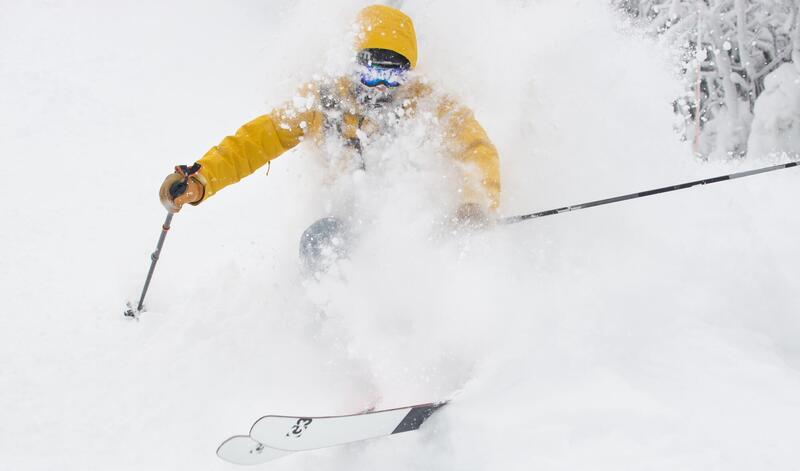
One of the most uncomfortable feelings while skiing or snowboarding is having cold extremities. If they get too cold, it can be downright painful, not to mention diminish your on-snow performance.
They say there is no such thing as bad weather, only bad gear. That may be true, but here are also some other ways to ensure your phalanges stay warm.
Wear quality gloves, boots, and socks
This is the most obvious answer. Don’t skimp on cheap gear. If you know you are prone to cold hands, buy a quality glove that is rated the warmest. Look for insulated gloves and get a liner to make them even warmer if necessary. Make sure they are waterproof because if your hands get wet there might be nothing you can do to get them warm until they are dry. Check out Swany Gloves, a SnowBrains favorite.
For boots, make sure your liners are thick and warm. Older liners wear down over time and lose their ability to insulate. Make sure the boots are the right size as well. Too much extra space will create pockets of cold air. Too tight of boots will restrict blood flow. Tightening your lower buckle too tight can also restrict blood flow and cut off circulation.
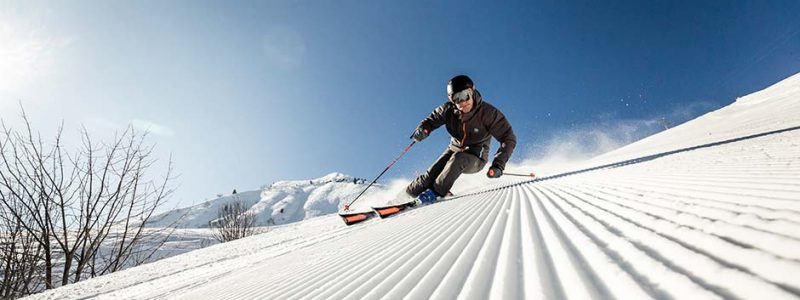
For socks, make sure you have specific skiing or snowboarding socks. They shouldn’t be too thick. I know that sounds counterintuitive, but feet need to be able to breathe and wick away moisture. Merino wool is a great material for this. Just make sure your socks are dry when you put them on.
Try mittens and a boot glove
Wearing mittens will bring all your fingers closer together so they can work to keep each other warm. It also reduces the surface area of the glove that is exposed to the elements. You do lose some dexterity by switching to mittens, so an in-between option could be this three-finger glove. This keeps your thumb and index finger by themselves but brings your other three fingers together.
For your feet, a boot glove is a great way to add an extra layer of insulation for your toes. They are made of neoprene just like a wetsuit. They are easy to install and cost-effective.
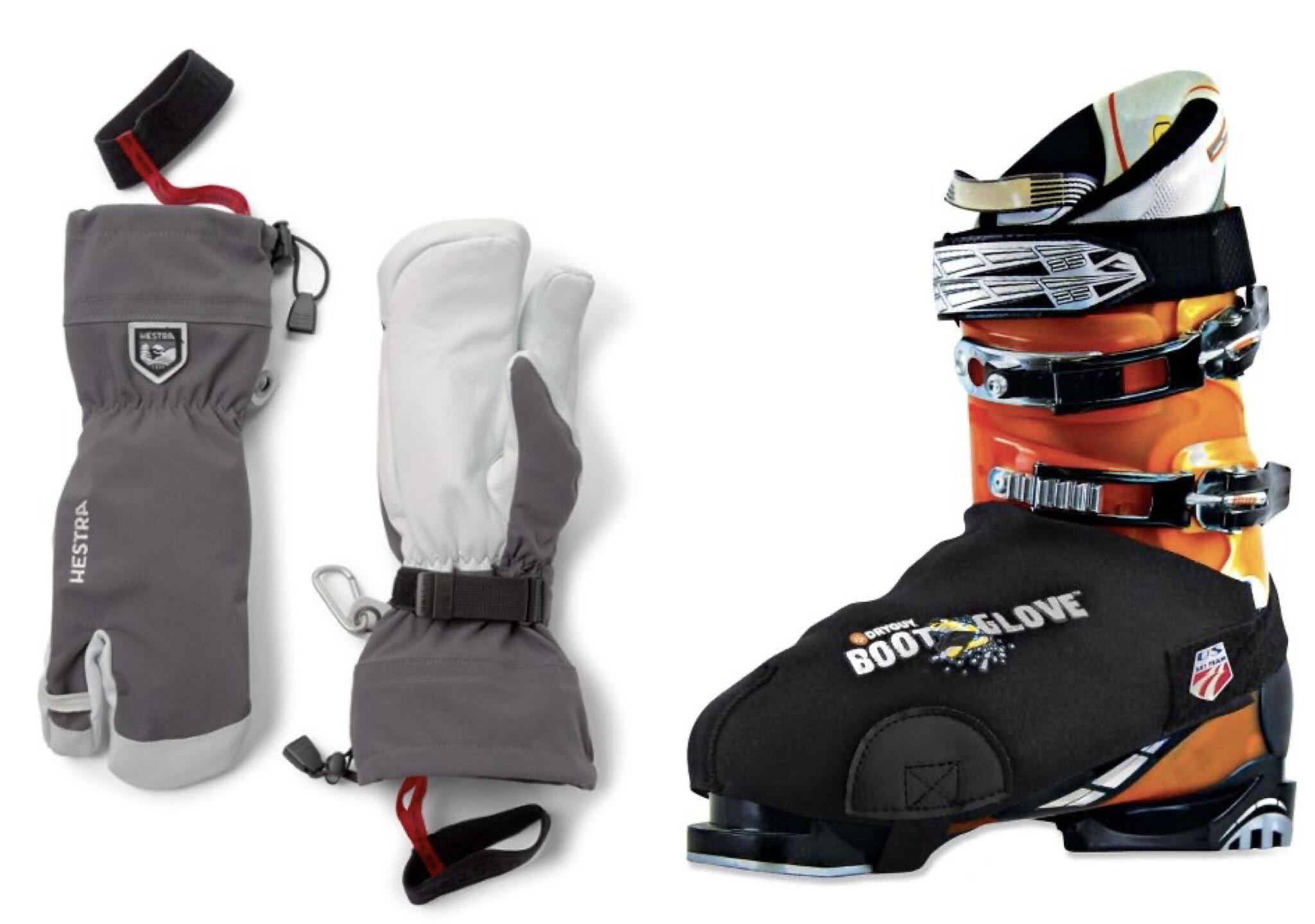
Use hand/toe warmers and battery-heated gloves/boots
A little help from some accessories can go a long way here. Hot hands and toe warmers are small single-use packets that can easily be put in your gloves and boots. They are cost-effective and are air activated to give long-lasting heat.
For a more aggressive option, go for battery-heated gloves. These use a battery to deliver continued heat. There is often a low and high setting to customize your warmth.
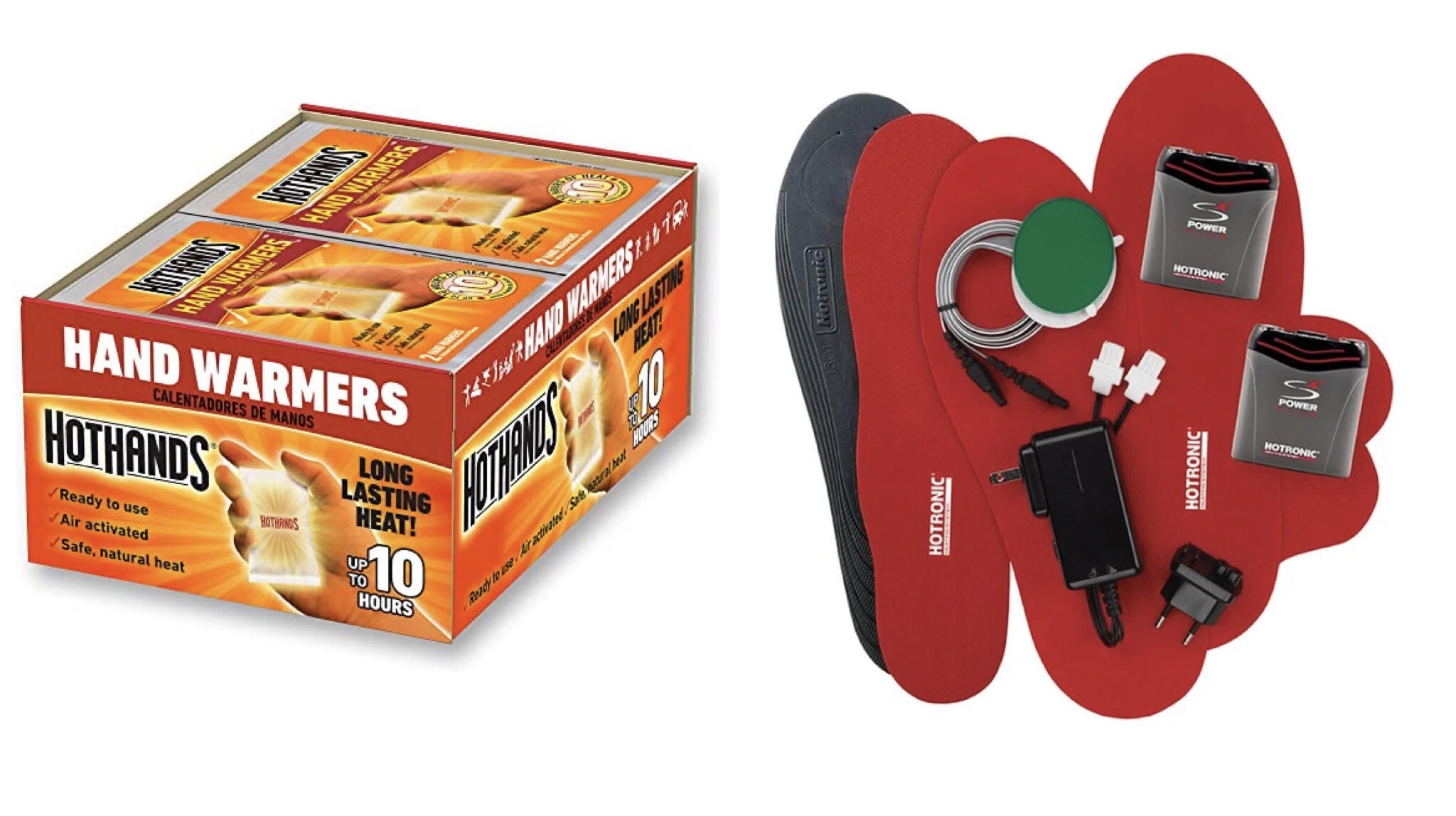
You can also install a battery-powered boot heater for your boots. It uses rechargeable batteries to heat the sole of your boot and provide a full day’s worth of warmth. It’s not cheap and you have to replace your entire sole, but it could be just what you need.
Keep the rest of your body warm
When your core body temperature drops, your hands and feet are usually the first part of your body to get cold. Wearing an extra layer, especially around your core, will keep the rest of your body warm, thus keeping your hands and feet warmer as well.
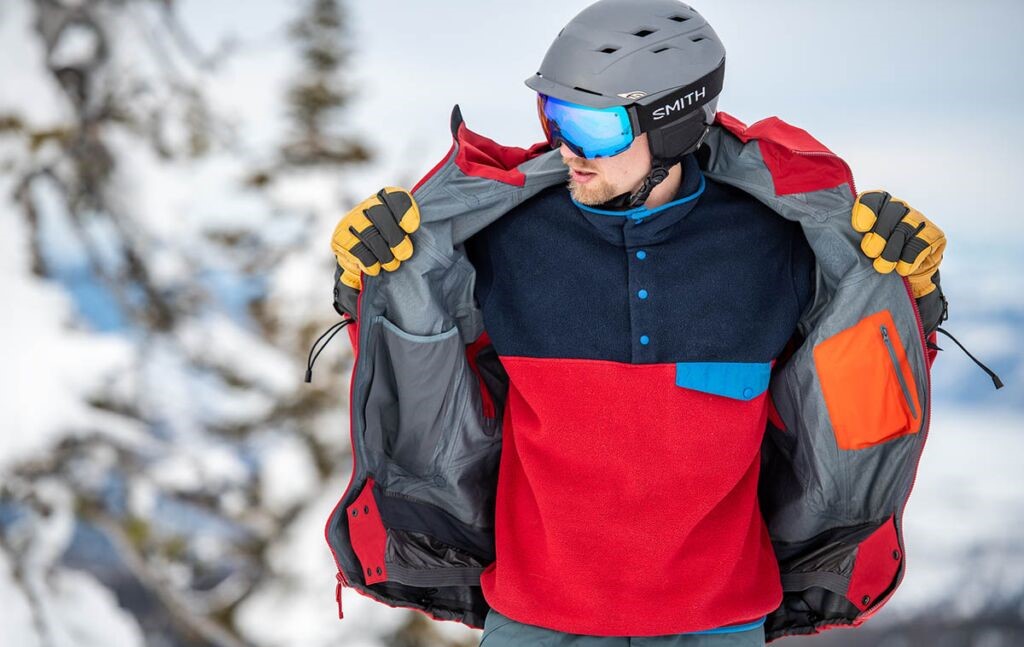
Another way to keep your body warm is to drink warm liquids and make sure you’ve eaten enough food. Being properly fueled warms your body temperature and ensures you have the energy to expend while skiing.
Put your gear on where it’s warm
Put your gloves on inside. This ensures both your hands and gloves are at room temperature. If you wait until you are outside and your hands are already getting cold, then your gloves are trying to insulate a cold hand from the start, and they may never catch up. A warm hand in a warm glove gives you the best odds of success.
The same advice goes for putting on boots. Don’t leave your boots in the car outside overnight. Keep them inside and then transfer them to a warmed-up car. Even better would be to plug a pair of travel boot dryers into your car’s auxiliary outlet while you drive up to the mountain. Then you put on a comfortable warm boot to start your day.

Other tips and tricks
- Don’t clench your fists or ski poles too hard. This can restrict blood flow to your hands.
- Tighten your wrist cuffs to seal out cold air and snow. Just make sure they aren’t too tight.
- Make sure you aren’t taking your gloves on and off. If you do it allows cold air in.
- Doing some arm swings at the end of every run can keep blood circulating to your fingers. Make sure you keep your hands at or below your heart. A minute or two of arm swings can make a significant difference.
If all else fails, one thing that always gets me warmed up is doing a mogul run. The effort involved gets your heart rate up, your legs burning, and your body temperature up.
If none of these tips work for you, just head to the lodge. Periodic warm-up sessions might be your last option.
